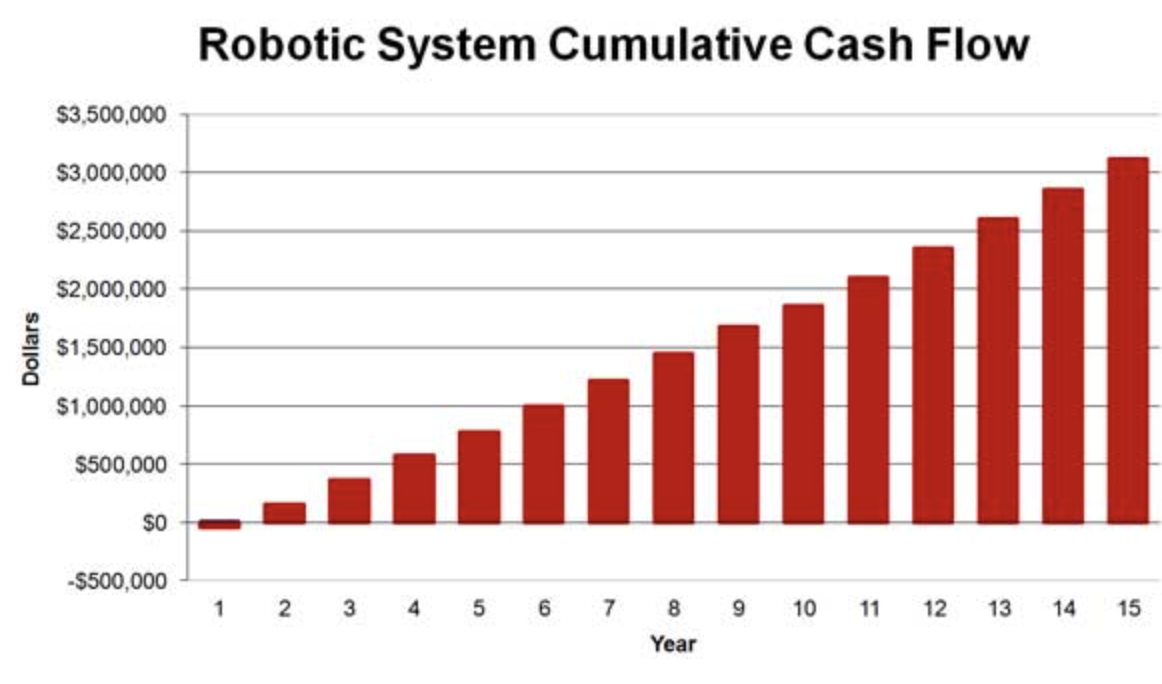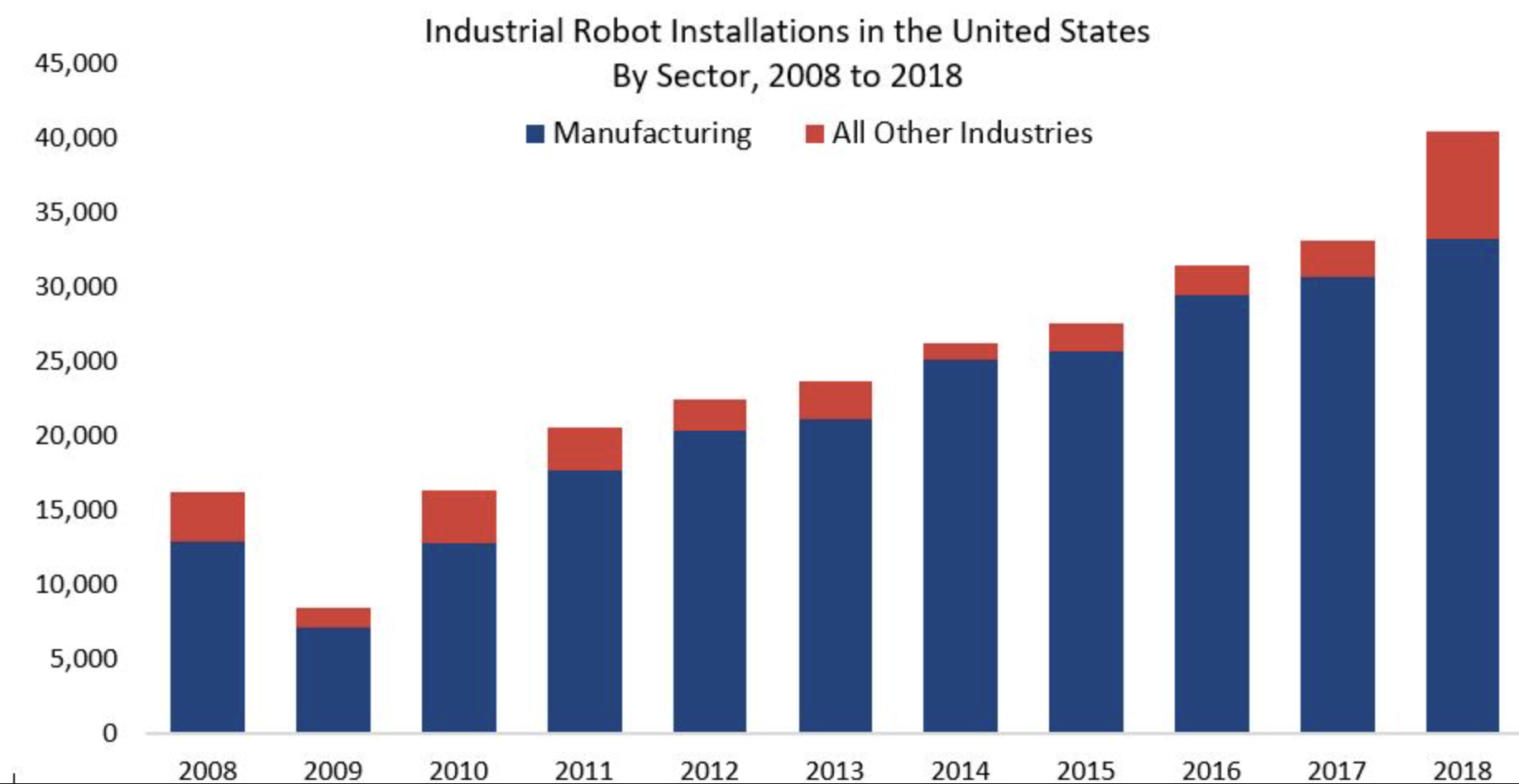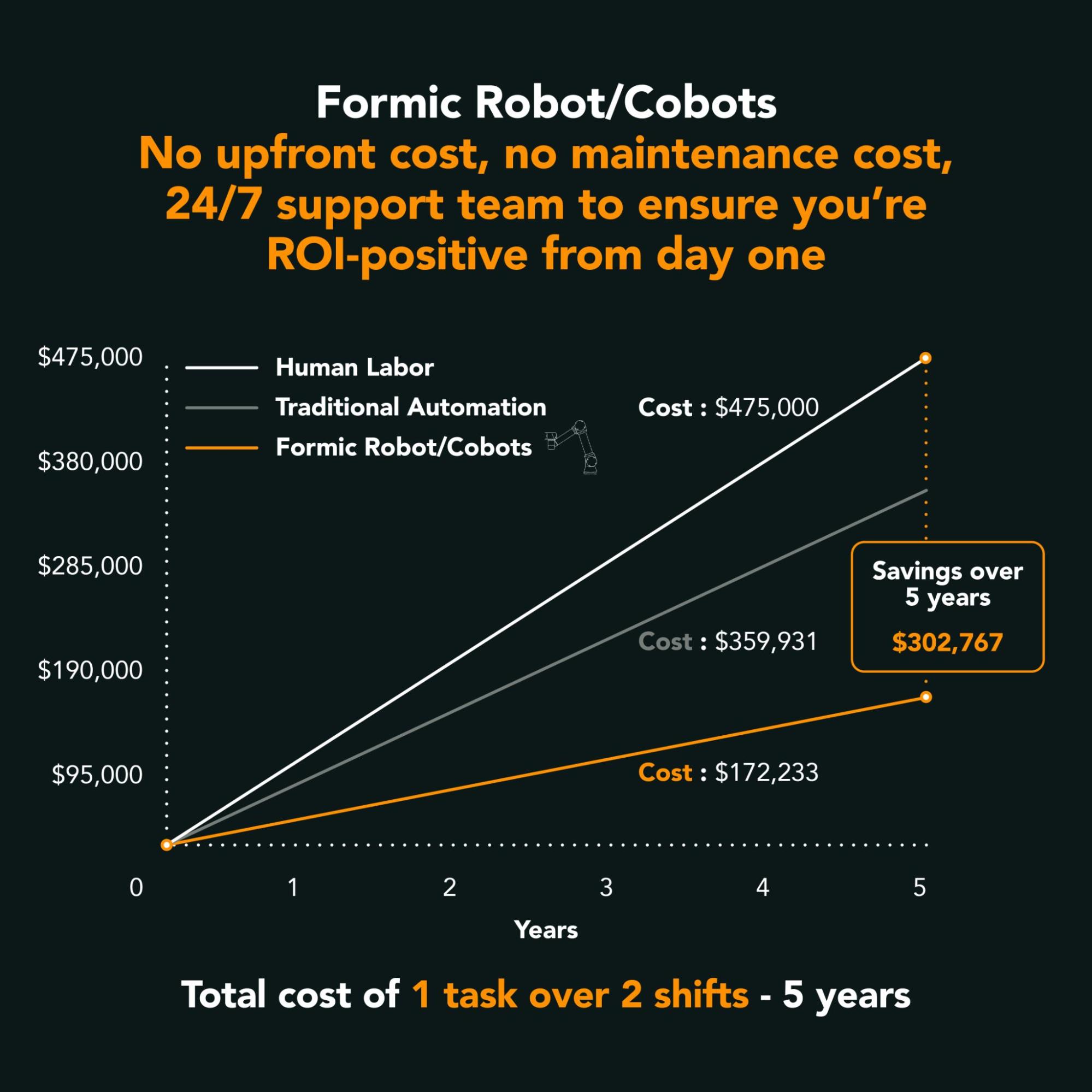The Comprehensive Guide to Industrial Automated Palletizing
Welcome to the fascinating world of industrial palletizing automation. As businesses strive to increase productivity, reduce costs, and improve safety, more and more industries are turning to automated solutions. Our comprehensive guide will help you understand the role of robotic palletizing in various industries, its benefits, and how it works.
What is an Automated Palletizer?
Robotic palletizing, a critical part of industrial palletizing automation, has revolutionized how businesses handle goods. From the food and beverage industry to pharmaceuticals and manufacturing, palletizing robots are now an essential element of a modern production line. These machines bring consistency, speed, and reliability to the process, replacing the monotony of manual labor with the precision of advanced robotics.
The Evolutionary Path to Industrial Palletizing Automation
The path to industrial palletizing automation has been a journey of innovation and advancement. Manual palletizing, which was once the norm, slowly gave way to mechanical and then automated palletizing systems. Today, we're at the forefront of the next big leap with industrial palletizing automation, where robotic palletizers combine the advantages of automation with the precision of advanced robotics.
Unpacking the Benefits of Palletizing Automation: How Does a Palletizer Work?
Palletizing automation offers a plethora of benefits such as increased operational efficiency, reduced labor costs, improved worker safety, and greater flexibility in handling diverse products. But how does a palletizer work to deliver these benefits?
A robotic palletizer uses an arm equipped with an end effector (a device at the end of the robotic arm), called End of Arm Tooling, to pick up items from a conveyor or another type of in-feed. Picked items are then precisely placed onto a pallet by the robot in a pre-programmed pattern. The process is repeated until a full layer of products is created, and then the next layer begins.
Step-by-Step Guide: How Does a Robotic Palletizer Work?
A robotic palletizer follows a series of steps:
- The process begins with items arriving on a conveyor belt or production line
- An array of sensors and field devices detect incoming items.
- The robotic arm, equipped with a specially designed end effector, picks up the item.
- The item is then placed onto the pallet in the most efficient pattern.
- This process is repeated until a layer is complete.
- Once a layer is complete, the next one begins, stacking precisely over the previous one.
- This continues until the pallet is fully loaded, ready for transportation or storage.
Understanding Different Types of Palletizers
In the world of material handling and palletizing automation, various technologies cater to different needs and applications. The choice of palletizer depends on factors like speed, precision, space, product type, and budget. Here's a closer look at three popular types of palletizers:
Get Your Free Getting Started Guide Here
Gantry Palletizers
Ideal for lower-speed applications, gantry palletizers use the same axis fundamentals that 3D-printers use to move goods. They are often employed in medium-high speed applications where pallet stability or item fragility may be a concern. The design allows for precise positioning and gentle handling of products, making them suitable for breakable, bottomless, or irregularly shaped items. Gantry palletizers offer a cost-effective solution without sacrificing quality, and their modular design can be adapted to various layouts and workflows. They are particularly popular in industries with lower production volumes or those seeking to automate palletizing without a significant capital investment.
Robotic Arm Palletizers
These palletizers are perfect for high-speed, high-precision tasks. With a versatile robotic arm, they can handle a wide range of product types and sizes. Robotic arm palletizers are known for their flexibility and adaptability, capable of managing complex stacking patterns and varying packaging requirements. They are often equipped with advanced vision systems and sensors, allowing for intelligent decision-making and real-time adjustments. This ensures optimal handling and positioning of products, regardless of shape or weight. Industries with diverse product lines and those requiring rapid changeovers between products will find robotic arm palletizers an invaluable asset.
Layer Palletizers
Layer palletizers handle an entire layer of products at once, making them suitable for high-speed operations. They are often used in industries where uniformity of products is common, such as beverage or packaged food production. By managing multiple products simultaneously, layer palletizers achieve remarkable efficiency and consistency in stacking. Their design allows for swift handling of large volumes, with minimal adjustments needed between batches. This makes them ideal for operations that rely on speed and precision without the need for complex reconfiguration. The ability to handle large layers at once translates into reduced cycle times and enhanced productivity, making layer palletizers a preferred choice in many high-throughput environments.
No matter which kind of palletizer you need for your facility, Formic’s team of industrial automation experts will help you scope the project, procure and integrate the robot, and provide full service on that robot, all for just one low hourly rate after it’s up and running on your floor. Read more on how to get started with automated palletizing, written by Formic’s team of experts who have deployed over 5,000 systems.
Why Your Plant Needs a Palletizer: Benefits of Palletizing Automation
Adopting a palletizer in your plant can lead to numerous operational and financial benefits. The integration of palletizing automation offers a transformative approach to managing product stacking and organization. It transcends traditional methods by enhancing efficiency, reducing costs, and improving safety.

Source: Automate.org
Get Your Free Getting Started Guide Here
Here's a detailed look at the compelling reasons to consider implementing palletizing automation:
Increased Efficiency and Throughput
Robotic palletizers work faster and more accurately than human workers, significantly increasing overall productivity. The precision and speed of automated systems enable handling a vast variety of products at a pace that manual labor cannot match. This leads to higher throughput, less downtime, and increased profitability. Whether dealing with uniform products or mixed pallet loads, robotic palletizers adapt seamlessly, ensuring consistent quality and performance. In turn, the ability to meet production targets and customer demands becomes more consistent and reliable.
Reduced Labor Costs
Automation reduces the need for manual labor, leading to substantial cost savings in the long run. By automating the palletizing process, plants can reallocate human resources to more value-added tasks, where critical thinking and problem-solving are essential. This not only reduces the direct labor costs associated with palletizing but also minimizes the expenses related to training, supervision, and potential injuries. The result is a more streamlined operation that leverages technology to achieve cost efficiency without compromising quality.
Improved Safety
By handling heavy loads and repetitive tasks, palletizers reduce the risk of workplace injuries, creating a safer environment for your workforce. Manual palletizing often involves lifting, bending, and twisting motions that can lead to strains and other musculoskeletal injuries. By delegating these tasks to a robotic system, workers are less exposed to these risks. Furthermore, modern palletizers are equipped with advanced safety features that ensure they operate within defined parameters, further enhancing the overall safety of the plant. The benefit extends beyond the physical well-being of the workforce; a safer work environment often leads to higher morale and job satisfaction, contributing to a more positive company culture.

Source: www.ifr.org
Where are Different Kinds of Plants Using Automated Palletizing Today?
Automated palletizing is rapidly becoming a standard across various industries. It offers significant advantages in efficiency, accuracy, and cost savings. Here's a look at some of the key areas where automated palletizing is making a difference.
Get Your Free Getting Started Guide Here
Food and Beverage Processing
Automated palletizing in the food and beverage industry has revolutionized packaging and distribution. It ensures consistent stacking and reduces product damage, leading to higher product quality. The speed and precision of robotic palletizing are critical in handling perishable items, minimizing waste, and maximizing shelf life. This efficiency translates into lower operational costs and increased profitability. A great example of automated palletizing making a huge impact in a Food and Beverage company, is Compact Industry.
Pharmaceutical Industry
In the pharmaceutical sector, automated palletizing offers unmatched precision and control. It's instrumental in handling sensitive products that require careful handling and specific placement. Automation ensures compliance with stringent regulations and enhances traceability. The result is improved safety, reduced risk of contamination, and higher overall quality standards.
Manufacturing and Automotive Industry
The manufacturing and automotive industries have long been pioneers in automation, and palletizing is no exception. Automated palletizing systems handle a wide variety of parts and products, from small components to large assemblies. They enhance productivity, reduce labor costs, and minimize the risk of injuries. The flexibility of robotic palletizing allows for quick adaptation to different products and packaging requirements, providing a competitive edge.
E-Commerce and Retail
The boom in e-commerce has increased the demand for efficient warehousing and distribution. Automated palletizing systems in e-commerce and retail fulfill the need for speed, accuracy, and scalability. They enable rapid processing of large volumes of orders, allowing businesses to meet customer expectations for fast delivery. By reducing manual labor and errors, automated palletizing contributes to smoother operations and higher customer satisfaction.
Construction Materials Industry
Handling heavy and bulky construction materials requires strength and precision. Automated palletizing systems cater to these demands by efficiently stacking and organizing products like bricks, blocks, and bags of cement. This automation reduces the physical strain on workers, increases throughput, and ensures uniform stacking, leading to safer transportation and storage.
How Much Does a Palletizer Typically Cost?
Palletizers play a crucial role in automating the stacking and organizing of products on pallets. However, investing in a palletizer requires careful consideration of the costs involved. The price of a palletizer can vary widely depending on the type, functionality, brand, and level of customization. On average, a basic palletizing system may start from $50,000, while advanced robotic palletizers could exceed $300,000. The cost is also influenced by the complexity of the system, installation, training, and ongoing maintenance.

Source: Formic.co
Total Cost of Ownership
The total cost of ownership (TCO) for a palletizer extends beyond the initial purchase price. It includes ongoing expenses such as maintenance, repairs, upgrades, energy consumption, and potential downtime costs. Depending on the system, the TCO can add a significant percentage to the initial investment over the lifetime of the palletizer. Understanding TCO is essential for making an informed purchasing decision, as it provides a more accurate picture of the long-term financial commitment.
Other Pitfalls of Ownership
Ownership of a palletizer also comes with potential pitfalls that need to be carefully considered. These include technological obsolescence, where the machinery becomes outdated and requires costly upgrades. Additionally, if the needs of the business change, the existing system may no longer be suitable, leading to inefficiencies or the need for replacement. Unexpected breakdowns can also lead to costly downtime and disruption to operations. It's essential to weigh these potential risks against the benefits of ownership to make an informed decision. Researchers at Formic have actually published a Whitepaper on the true costs of robotic ownership.
Using the Robots-as-a-Service Model (RaaS)
A revolutionary alternative to direct ownership is taking advantage of Formic’s Robots-as-a-Service (RaaS) model. RaaS allows companies to leverage palletizing technology without the upfront capital investment. Instead, businesses pay a subscription or rental fee for access to the technology, typically including maintenance, support, and regular updates. This model offers greater flexibility, scalability, and can mitigate many of the pitfalls of ownership. It's an option that can be particularly appealing to small and medium-sized businesses or those looking to trial the technology without a long-term commitment.
Get Your Free Getting Started Guide Here
Depalletizers: The Complementary Side of Palletizing Automation
Depalletizers are the unsung heroes of the automation world. These machines unload goods from pallets, placing them onto conveyors for further processing. While they work in reverse order to palletizers, their goals are the same: efficiency, precision, and safety. Together, palletizers and depalletizers form an efficient system that handles the entire pallet loading and unloading process, making them the perfect pair in any industrial setting.
Top Robotic Palletizing Solutions from Industry Leaders
With Formic, you get access to the industry leaders in palletizing for no equipment costs or installation costs, unlimited free maintenance, and contractually guaranteed output for a low hourly rate.
Fanuc
Known for their advanced robotic solutions, Fanuc offers a range of palletizing robots suitable for various industries. Their robots are designed for high speed, precision, and reliability.
ABB
ABB offers a range of palletizing solutions, from compact, low-footprint models to high-speed, high-capacity models. Their robots are known for their flexibility and efficiency.
KUKA
KUKA's palletizing robots are known for their speed, accuracy, and versatility. They offer models that can handle a wide range of weights and sizes, making them suitable for diverse industries.
Universal Robotics
Universal Robotics is a pioneer in the field of collaborative robots. Their palletizing solutions are user-friendly and highly adaptable, capable of working alongside human employees without the need for safety guarding.
Yaskawa
Yaskawa offers innovative palletizing solutions that excel in terms of speed, energy efficiency, and dependability. Their robots are designed to work tirelessly, offering consistent performance and a high level of precision.
Get Your Free Getting Started Guide Here
Conclusion
As we journey through the 21st century, automation continues to shape our industries, and palletizing automation stands as a perfect example. By incorporating these technologies into your plant, you can enjoy increased efficiency, reduced costs, and a safer working environment. So, isn't it time you explored what palletizing automation can do for you? Or, have you already explored, but didn’t implement?
Download the Free Guide: How to Get Started with Robotic Automation
Automating with Formic, the only question manufacturers need to ask themselves is: what repetitive manual tasks can be automated in my facility right now?


